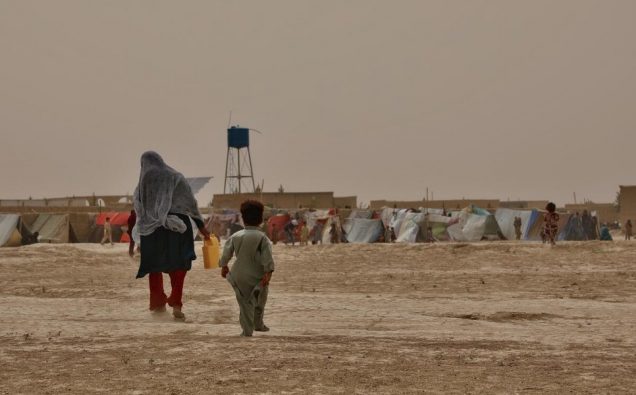
Amid surprisingly quick Taliban control over vast swaths of Afghanistan and the inability of the crumbling Afghan state to resolve the crisis politically, the United States is pulling out most of its diplomats from the embassy in Kabul.
President Joe Biden has deployed thousands of troops to the region to evacuate most of the American Embassy and U.S. citizens in Kabul.
The fall of fortified Kandahar and Herat provinces to the Taliban and very little people’s resistance to the Taliban advances in several provincial capitals exposed the weakness of President Ashraf Ghani’s government to deal with the crisis in Afghanistan.
Several reports said the Afghan security forces were either overrun or many soldiers and policemen deserted, or even joined the Taliban.
The US intelligence says the Taliban militants could overrun capital Kabul within 90 days.
Afghanistan has been in a state of free fall during the last few weeks as Kabul continues to refuse talks with the Taliban for a political solution to the internal strife that has never been pursued earnestly.
Political reconciliation was part of the process that the US and the Taliban agreed to last year when the Taliban came to the negotiating table due in part to Pakistan’s push for a peace deal.
The situation has worsened as after two decades of conflict and economic investments, the US and NATO continue to withdraw their troops. President Biden is resolved to complete the US withdrawal by August 31.
President Ghani’s former minister Omar Zakhilwal exposed his former boss’s narcissist political approach to governance at the cost of national interests.
In Washington, Pentagon Press Secretary John Kirby confirmed that two Marine infantry battalions and one Army battalion, some 3,000 troops altogether, were being deployed to Hamid Karzai International Airport to help evacuate Americans and embassy personnel. The troops are coming from areas in the Middle East, the Central Command area of responsibility, Kirby said.
If those troops end up in Afghanistan, that would bring the number of American forces there to around 7,000, more than double the number in the country when Biden announced in April that he would withdraw American troops and end America’s longest war.
The deployment is “a very narrowly focused mission of safeguarding the orderly reduction of civilian personnel out of Afghanistan,” Kirby said. “That’s what we’re going to be focused on. It’s not a combat mission”
Even a diplomatic gathering in search of a way out of the Afghan mess failed to yield any concrete outcome on Thursday. Talks featuring international diplomats and representatives of the Taliban and the Afghan government wrapped up in Qatar after three days of meetings without significant progress.
Major players with stakes in the Afghan peace including the US, Pakistan, EU, and China, signed a joint statement saying they would not recognize any government in Afghanistan “imposed through the use of military force.”
US Secretary of State Antony Blinken discussed plans to curb violence in Afghanistan with his Canadian and German counterparts, as well as NATO Secretary-General Jens Stoltenberg.
While an Afghan collapse will pose a serious threat to regional and international peace and security, the American opinion has turned against the war in the country, which the US invaded in the wake of the 9/11 terrorist attacks. The US initially signaled its intent to focus on nation-building but later the Obama and Trump administrations narrowed down the US mission.
President Biden has cited the futility of further prolonging the conflict and his administration has challenged President Ashraf Ghani to deal with the situation as its security forces have been trained and armed to meet challenges.
In the region, meanwhile, Pakistan has rejected some Afghan officials’ claims that it is supporting the Taliban in its violent campaign.
Prime Minister Imran Khan said Islamabad’s influence over the Taliban has waned as they feel emboldened with the pullout of international forces and their control of more and more Afghan territory.
Meanwhile, concerned over the deteriorating situation, the United Nations has warned of looming crises in the country. According to the UNHCR it is particularly concerned about the impact of the conflict on women and girls as “80 percent of nearly 250,0000 Afghans forced to flee since the end of May are women and children.”
“This is a staggering statistic,” spokesperson Ms. Shabia Mantoo said in Geneva. “We need to raise the alarm about the disproportionate toll they are paying for what is happening on the ground.”
The UN cited a report published last month jointly by the UN human rights office (OHCHR) and the UN Assistance Mission in Afghanistan (UNAMA), which said more women and children were killed and wounded in the first half of 2021 than in the first six months of any year since records began in 2009.
The World Food Programme (WFP) spokesperson Tomson Phiri explained that the conflict “has accelerated much faster than we all anticipated and the situation has all the hallmarks of a humanitarian catastrophe”.

















